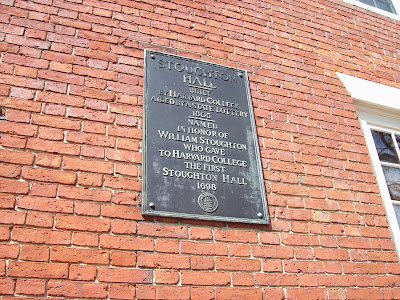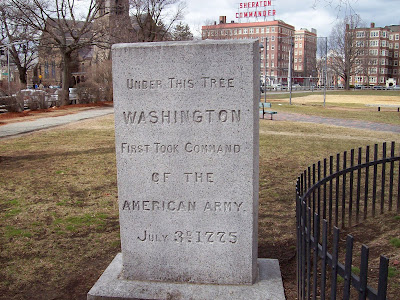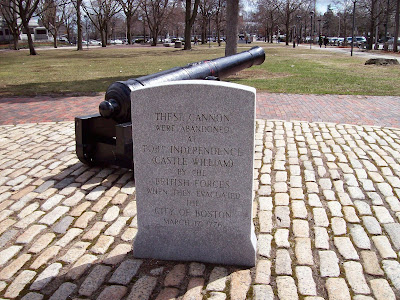On Saturday I attended an excellent lecture by Mary Tedesco at the monthly meeting of the Essex Society of Genealogists in Lynnfield. The title of Mary’s presentation was "Immigrant Origins: Locating Your Ancestral Town." Mary gave a thorough explanation on researching an immigrant ancestor by conducting a reasonably exhaustive search for genealogical records using a combination of original and derivative sources. It is vital to conduct thorough research from all potential sources in the destination country in order to locate an ancestor’s home town in the country of origin. It is the prerequisite for conducting successful research in foreign genealogical records.
Mary Tedesco is the founder and lead researcher of Origins Italy, a firm specializing in Italian genealogical research. She presents frequently at local genealogical meetings and will present a lecture entitled "Adventures in Italian Genealogy" at the Massachusetts Genealogical Council seminar on July 26 in Mansfield, Massachusetts. Mary is a colleague through the Boston University Genealogy program, and I have recently hired her to conduct research in Italian records. For additional information about Mary please visit her website at http://www.originsitaly.com and my blog post, Italian Onsite Research Demystified.
The Essex Society of Genealogists meets on the third Saturday of each month at the Centre Congregational Church in Lynnfield Center. For additional information on the Essex Society of Genealogists please visit their website at http://www.esog.org.
This post is the first in a continuing series of posts on methodologies for researching an immigrant ancestor, labeled Immigrant Research Methodologies.
Friday, April 25, 2014
Friday, April 11, 2014
Cambridge in 1775 Walking Tour
Last Saturday my genealogy friend and colleague Liz Loveland and I attended a "Cambridge in 1775" walking tour hosted by the Cambridge Center for Adult Education and led by Boston historian Charles Bahne, author of The Complete Guide to Boston's Freedom Trail. The tour focused on sites near Harvard Square that played a significant role in the events leading up to the American Revolution, including the Battle of Lexington and Concord on April 19, 1775, the Battle of Bunker Hill on June 17, 1775, and George Washington's arrival in Cambridge in July 1775 to take command of the Continental Army.
The tour began at the William Brattle House at 42 Brattle Street, which is now the main facility of the Cambridge Center for Adult Education. General Major William Brattle Jr. was a decorated military hero of the French and Indian War. Although he appeared to sympathize with the patriots he was a Loyalist, siding with the British Crown in the tensions leading up to the American Revolution. In August of 1774 Brattle wrote a letter to Thomas Gage, the Royal Governor of Massachusetts, informing him of the formation of local militias and the storing of gunpowder in local arsenals. Three days later Gage ordered three hundred soldiers to sail up the Mystic River to Charlestown to seize the gunpowder. The "Powder Alarm" enraged the citizens of Cambridge, who formed a rally of four thousand attendees on the Cambridge Common the next day to protest Gage's actions and to demand the resignation of three Loyalist members of the Mandamus Council. One of the members, Thomas Oliver, rode to Boston to prevent Governor Gage from sending soldiers in an attempt to suppress the crowd. Oliver returned to Cambridge, assuring the crowd that Gage would not employ military action in order to persuade the crowd to disperse peacefully. However, a hated tax collector, Benjamin Hallowell, rode past the crowd in his carriage, and a group of enraged citizens pursued his carriage. After these episodes William Brattle, as well as many of the Cambridge Loyalists, left their Cambridge homes for safer lodgings in Boston. 1
.jpg)
We proceeded up Brattle Street to Mount Auburn Street to stop at the plaque marking the home of Professor John Winthrop, a descendant of Puritan Governor John Winthrop.

Walking along John F. Kennedy Avenue to South Street we arrived at the home of John Hicks, who was killed on April 19, 1775 during the British retreat from Concord. This home was moved from its original position nearly one block away at the intersection of South and Dunster streets.

.jpg)
Continuing into the heart of Harvard Square we arrived at Apthorp House at 10 Linden Street. Apthorp House, currently owned by Harvard University, was built in 1760 for Reverend East Apthorp of Christ Church, the first Anglican Church in Cambridge. Apthorp was severely criticized for the opulence of the home, known as the "Bishop's Palace", and for its fine grounds that extended to the Charles River. Local outrage for the clergyman's extravagance forced him to flee to Britain in 1764. The house was later owned by John Borland, a Loyalist who departed from Cambridge in 1775. General Israel Putnam later made the house his headquarters, and British General John Burgoyne was held as a prisoner here after his capture at the Battle of Saratoga in 1777.2
.jpg)
.jpg)
Turning from Linden Street onto Massachusetts Avenue we faced the entrance to Harvard Yard. Directly to the left is the Wadsworth House, built in 1726 for Harvard President Benjamin Wadsworth. Wadsworth House was the home of President Samuel Langdon in 1775 and served as General George Washington's first headquarters upon his arrival in Cambridge in July 1775.

Crossing Massachusetts Avenue and entering Harvard Yard we proceeded to the location of the oldest buildings on campus. Four of the original five buildings on the campus in 1775 are still standing: Massachusetts Hall, Harvard Hall, Hollis Hall, and Holden Chapel. In 1775 all buildings except for Massachusetts Hall were used as barracks for soldiers.



.jpg)
The fifth building, Stoughton Hall, was torn down after the American Revolution and subsequently rebuilt. A plaque commemorating the original building adorns today's Stoughton Hall.

As we exited from Harvard Hall we passed by the stone monument marking the location of the Jonathan Hastings house, which served as a meeting place for the Committee of Public Safety and the headquarters for General Artemus Ward during the Siege of Boston. Oliver Wendell Holmes Sr. was born in this house in 1809. When the adjoining Harvard Law School was built Holmes felt that the house obstructed the view of the new building and suggested that the house be torn down.3

Near the Hastings House marker is a stone monument commemorating the meeting place of twelve hundred Continental soldiers the evening before the Battle of Bunker Hill, where they assembled and prayed before marching to battle.

We crossed Massachusetts Avenue and entered Cambridge Common, established in 1630 as undivided common area for the grazing of livestock. On the evening of April 18, 1775, William Dawes rode along Massachusetts Avenue, passing Cambridge Common on his route to Lexington. The Common served as camping grounds for local militia during the Siege of Boston.4
.jpg)
Facing the Common along Garden Street is Christ Church, established as the first Anglican Church in Cambridge. Christ Church closed in 1774 as Loyalists fled Cambridge but was reopened on December 31, 1775 for a New Year's Eve service attended by George and Martha Washington.5

Although Christ Church was the final stop of the tour, Liz and I walked along the Garden Street side of the Cambridge Common to view the sapling from the original Washington Elm, under which legend claims that George Washington assumed command of the Continental Army on July 3, 1775.6


Near the Washington Elm sapling are monuments to Revolutionary War Generals Thaddeus Kocziusko and Casimir Pulaski and cannons abandoned by the British during the evacuation from Boston on March 17, 1776.



At the intersection of Mason and Garden Street is a marker to commemorate General Henry Knox's delivery of the artillery train from Fort Ticonderoga to General Washington in January 1776. Across the street is the First Church of Cambridge, atop which stands a shuttlecock weathervane from the New Brick Church of Boston, the parish where Paul Revere worshiped during the Revolution.



On May 3 Charles Bahne will lead another history walk hosted by the Cambridge Center for Adult Education focusing on the "Tory Row" mansions along Brattle Street. For more information about "Tory Row" please visit my blog post Brattle Street "Tory Row" Walking Tour. For additional information about classes and walks at the Cambridge Center for Adult Education please visit their website at https://www.ccae.org.
References:
1Cambridge Historical Society, "Cambridge and the American Revolution: William Brattle House," Brattle House (http://cambridgehistory.org/discover/Cambridge-Revolution/Brattle%20House.html: 09 April 2014). Cambridge Historical Society, "Cambridge and the American Revolution: Powder Alarm," French and Indian War (http://cambridgehistory.org/discover/Cambridge-Revolution/Powder%20Alarm.html: 09 April 2014).
2Harvard University, "Apthorp House," Apthorp House | Adams House (http://adamshouse.harvard.edu/site-page/apthorp-house: 09 April 2014).
3Cambridge Historical Society, "Cambridge and the American Revolution: Jonathan Hastings House," Hastings House (http://cambridgehistory.org/discover/Cambridge-Revolution/Hastings%20House.html).
4Cambridge Historical Society, "Cambridge and the American Revolution: The Cambridge Common," The Cambridge Common (http://cambridgehistory.org/discover/Cambridge-Revolution/Cambridge%20Common2.html).
5Christ Church Cambridge, "History," History - Christ Church Cambridge (http://cccambridge.org/about/history/#.U0LKNVfmF_U).
6Cambridge Historical Society, "Cambridge and the American Revolution: The Cambridge Common," The Cambridge Common (http://cambridgehistory.org/discover/Cambridge-Revolution/Cambridge%20Common2.html).
The tour began at the William Brattle House at 42 Brattle Street, which is now the main facility of the Cambridge Center for Adult Education. General Major William Brattle Jr. was a decorated military hero of the French and Indian War. Although he appeared to sympathize with the patriots he was a Loyalist, siding with the British Crown in the tensions leading up to the American Revolution. In August of 1774 Brattle wrote a letter to Thomas Gage, the Royal Governor of Massachusetts, informing him of the formation of local militias and the storing of gunpowder in local arsenals. Three days later Gage ordered three hundred soldiers to sail up the Mystic River to Charlestown to seize the gunpowder. The "Powder Alarm" enraged the citizens of Cambridge, who formed a rally of four thousand attendees on the Cambridge Common the next day to protest Gage's actions and to demand the resignation of three Loyalist members of the Mandamus Council. One of the members, Thomas Oliver, rode to Boston to prevent Governor Gage from sending soldiers in an attempt to suppress the crowd. Oliver returned to Cambridge, assuring the crowd that Gage would not employ military action in order to persuade the crowd to disperse peacefully. However, a hated tax collector, Benjamin Hallowell, rode past the crowd in his carriage, and a group of enraged citizens pursued his carriage. After these episodes William Brattle, as well as many of the Cambridge Loyalists, left their Cambridge homes for safer lodgings in Boston. 1
.jpg)
We proceeded up Brattle Street to Mount Auburn Street to stop at the plaque marking the home of Professor John Winthrop, a descendant of Puritan Governor John Winthrop.

Walking along John F. Kennedy Avenue to South Street we arrived at the home of John Hicks, who was killed on April 19, 1775 during the British retreat from Concord. This home was moved from its original position nearly one block away at the intersection of South and Dunster streets.

.jpg)
Continuing into the heart of Harvard Square we arrived at Apthorp House at 10 Linden Street. Apthorp House, currently owned by Harvard University, was built in 1760 for Reverend East Apthorp of Christ Church, the first Anglican Church in Cambridge. Apthorp was severely criticized for the opulence of the home, known as the "Bishop's Palace", and for its fine grounds that extended to the Charles River. Local outrage for the clergyman's extravagance forced him to flee to Britain in 1764. The house was later owned by John Borland, a Loyalist who departed from Cambridge in 1775. General Israel Putnam later made the house his headquarters, and British General John Burgoyne was held as a prisoner here after his capture at the Battle of Saratoga in 1777.2
.jpg)
.jpg)
Turning from Linden Street onto Massachusetts Avenue we faced the entrance to Harvard Yard. Directly to the left is the Wadsworth House, built in 1726 for Harvard President Benjamin Wadsworth. Wadsworth House was the home of President Samuel Langdon in 1775 and served as General George Washington's first headquarters upon his arrival in Cambridge in July 1775.

Crossing Massachusetts Avenue and entering Harvard Yard we proceeded to the location of the oldest buildings on campus. Four of the original five buildings on the campus in 1775 are still standing: Massachusetts Hall, Harvard Hall, Hollis Hall, and Holden Chapel. In 1775 all buildings except for Massachusetts Hall were used as barracks for soldiers.



.jpg)
The fifth building, Stoughton Hall, was torn down after the American Revolution and subsequently rebuilt. A plaque commemorating the original building adorns today's Stoughton Hall.

As we exited from Harvard Hall we passed by the stone monument marking the location of the Jonathan Hastings house, which served as a meeting place for the Committee of Public Safety and the headquarters for General Artemus Ward during the Siege of Boston. Oliver Wendell Holmes Sr. was born in this house in 1809. When the adjoining Harvard Law School was built Holmes felt that the house obstructed the view of the new building and suggested that the house be torn down.3

Near the Hastings House marker is a stone monument commemorating the meeting place of twelve hundred Continental soldiers the evening before the Battle of Bunker Hill, where they assembled and prayed before marching to battle.

We crossed Massachusetts Avenue and entered Cambridge Common, established in 1630 as undivided common area for the grazing of livestock. On the evening of April 18, 1775, William Dawes rode along Massachusetts Avenue, passing Cambridge Common on his route to Lexington. The Common served as camping grounds for local militia during the Siege of Boston.4
.jpg)
Facing the Common along Garden Street is Christ Church, established as the first Anglican Church in Cambridge. Christ Church closed in 1774 as Loyalists fled Cambridge but was reopened on December 31, 1775 for a New Year's Eve service attended by George and Martha Washington.5

Although Christ Church was the final stop of the tour, Liz and I walked along the Garden Street side of the Cambridge Common to view the sapling from the original Washington Elm, under which legend claims that George Washington assumed command of the Continental Army on July 3, 1775.6


Near the Washington Elm sapling are monuments to Revolutionary War Generals Thaddeus Kocziusko and Casimir Pulaski and cannons abandoned by the British during the evacuation from Boston on March 17, 1776.



At the intersection of Mason and Garden Street is a marker to commemorate General Henry Knox's delivery of the artillery train from Fort Ticonderoga to General Washington in January 1776. Across the street is the First Church of Cambridge, atop which stands a shuttlecock weathervane from the New Brick Church of Boston, the parish where Paul Revere worshiped during the Revolution.



On May 3 Charles Bahne will lead another history walk hosted by the Cambridge Center for Adult Education focusing on the "Tory Row" mansions along Brattle Street. For more information about "Tory Row" please visit my blog post Brattle Street "Tory Row" Walking Tour. For additional information about classes and walks at the Cambridge Center for Adult Education please visit their website at https://www.ccae.org.
References:
1Cambridge Historical Society, "Cambridge and the American Revolution: William Brattle House," Brattle House (http://cambridgehistory.org/discover/Cambridge-Revolution/Brattle%20House.html: 09 April 2014). Cambridge Historical Society, "Cambridge and the American Revolution: Powder Alarm," French and Indian War (http://cambridgehistory.org/discover/Cambridge-Revolution/Powder%20Alarm.html: 09 April 2014).
2Harvard University, "Apthorp House," Apthorp House | Adams House (http://adamshouse.harvard.edu/site-page/apthorp-house: 09 April 2014).
3Cambridge Historical Society, "Cambridge and the American Revolution: Jonathan Hastings House," Hastings House (http://cambridgehistory.org/discover/Cambridge-Revolution/Hastings%20House.html).
4Cambridge Historical Society, "Cambridge and the American Revolution: The Cambridge Common," The Cambridge Common (http://cambridgehistory.org/discover/Cambridge-Revolution/Cambridge%20Common2.html).
5Christ Church Cambridge, "History," History - Christ Church Cambridge (http://cccambridge.org/about/history/#.U0LKNVfmF_U).
6Cambridge Historical Society, "Cambridge and the American Revolution: The Cambridge Common," The Cambridge Common (http://cambridgehistory.org/discover/Cambridge-Revolution/Cambridge%20Common2.html).
Subscribe to:
Posts (Atom)